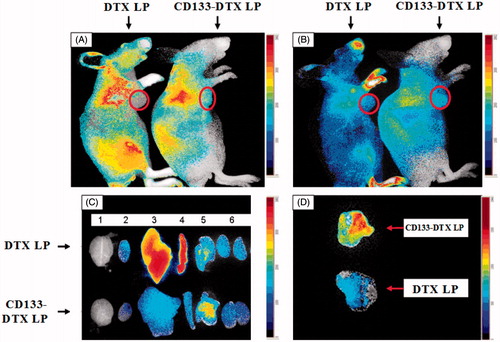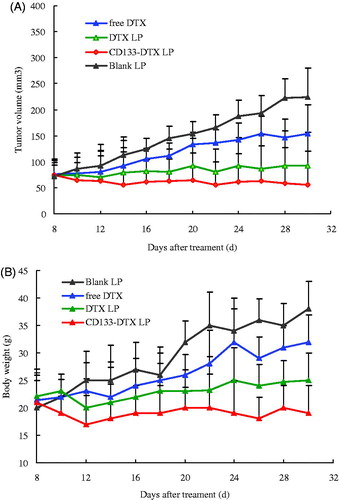Figures & data
Figure 1. The structure of CD133-DTX LP (A) and the transmission electron microscope of DTX LP (B) and CD133-DTX LP (C) (×97,000).
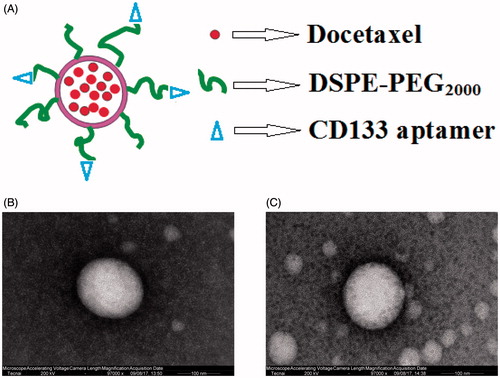
Table 1. The characteristics of different formulations: particle size, entrapment efficiency, polydispersity index and zeta potential (n = 3).
Figure 2. The release profile of free DTX (top line), DTX LP (middle line) and CD133-DTX LP (bottom line) (n = 6).
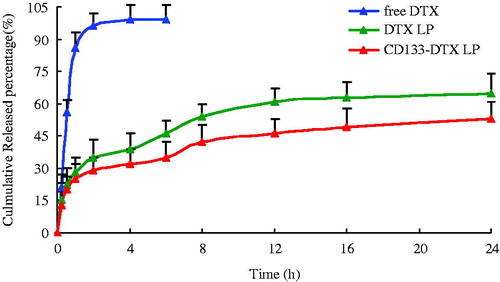
Table 2. Physical stability of CD133-DTX LP at 2–8 °C (n = 3).
Figure 3. Confocal images of cellular uptake of free DTX (A), DTX LP (B) and CD133-DTX LP (C) by a 549 cells. Incubation time was 2 h.

Figure 4. In vitro cytotoxicity analysis of free DTX, DTX LP and CD133-DTX LP on A549 cell lines. Cell viability assay was performed by MTT assay.
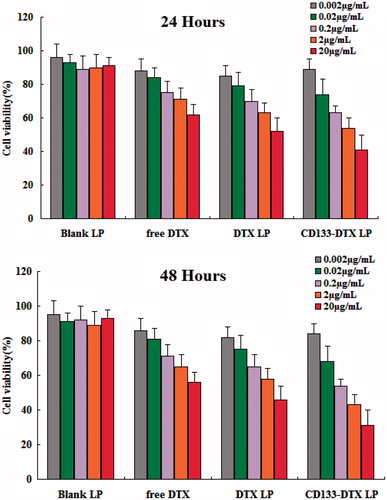
Figure 5. Fluorescence images of subcutaneous A-549 tumour-bearing nude mice after intravenous injection of DTX LP and CD133-DTX LP. The circle, the position of the tumour. (A) 2 h after injection. (B) 8 h after injection. (C) Fluorescence image of dissected organs of mice bearing A-549 tumour sacrificed 10 h after intravenous injection. 1, brain; 2, heart; 3, liver; 4, spleen; 5, lung. (D) Fluorescence image of dissected tumours of mice 10 h after intravenous injection of DTX LP and CD133-DTX LP.
